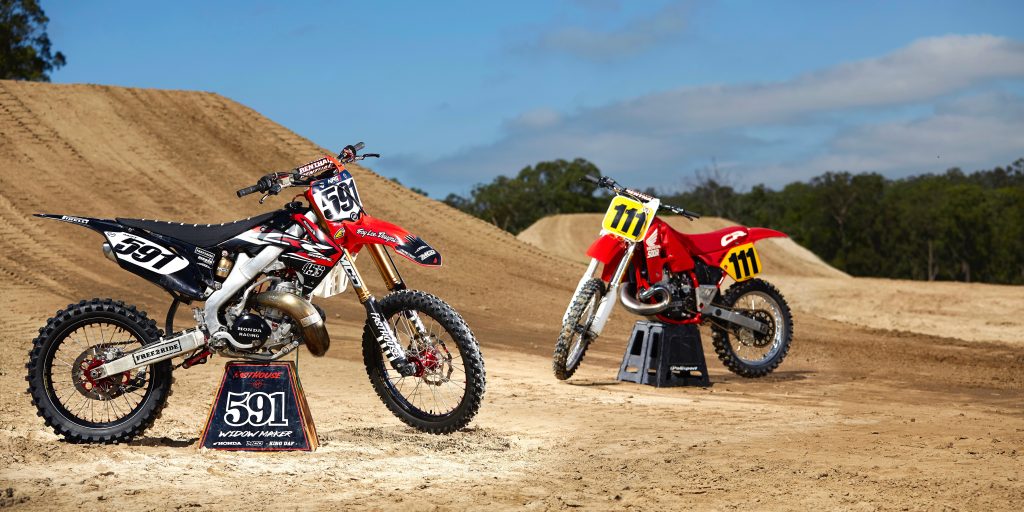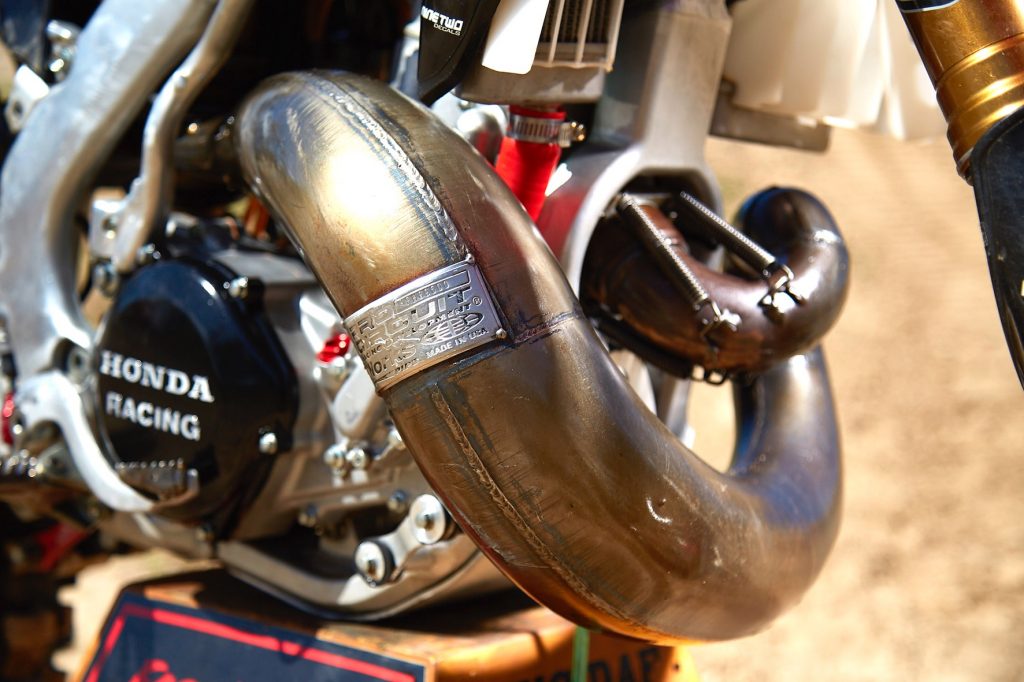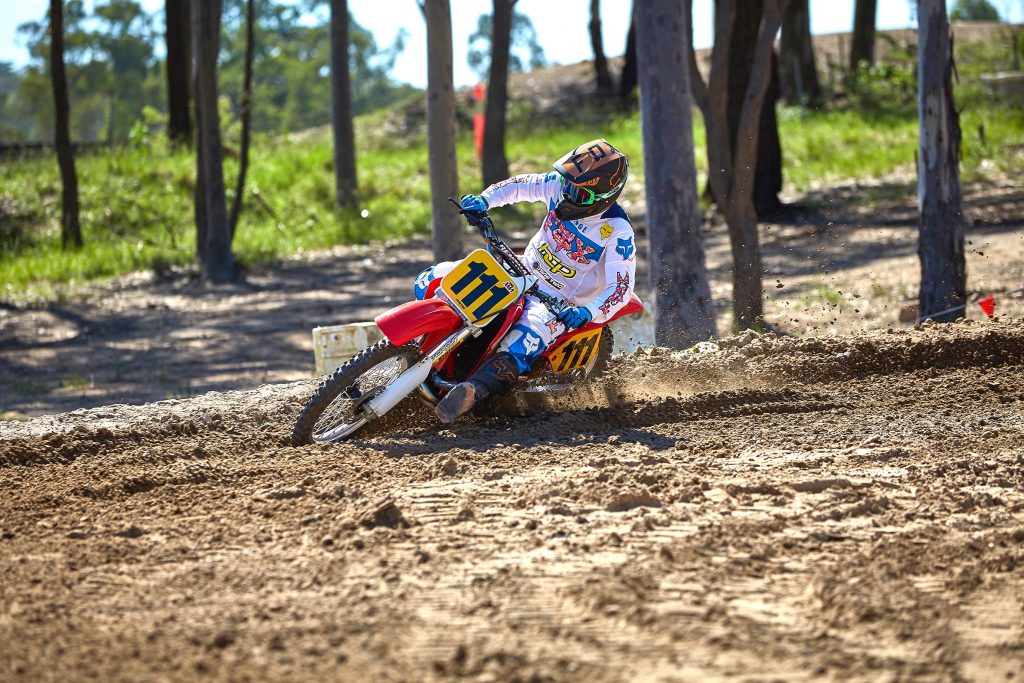I’ve raced many motorcycles over the years, but the one that stands out as my all-time favorite, is the 1994 Honda CR500. That year I won the Australia 500cc Motocross Championship and I got to represent Australia at the MXdN in Switzerland aboard a CR500.
I’ve always been on the hunt for new opportunities to swing a leg over a 500. Whether they are restored originals, or modern custom job. However, I think the modern-day 500 machines, which put a 500 engine into a modern alloy frame with modern suspension, are a failure in comparison to the traditional steel frame cradle.
The alloy frames can make the bike vibrate and feel extremely rigid, and they are a little unfriendly to ride. The idea for a head-to-head comparison between old and new, really fell into my lap. I was on the phone to my good pal Paris Corless. I told him about a custom CR500 that ADB had lined up for me to test. He suggested putting it up against his pristine 1989 CR500 that he’d just finished restoring.
The custom Honda CR500 was owned by Ryan Sylvester, a motorcycle enthusiast from Sydney. The power plant was a 1996 CR500 motor that he found in America. He then fitted the motor into a 2011 Honda CRF250R chassis and gave it a tune with help from Ross McWatters at MCD. Ryan fitted Showa A-Kit suspension to finish the package off nicely. He said that he stopped counting the cost of the project after $8000.
I always get excited when I have a 500 in front of me. The bike fired into life after one kick. My experiences with alloy framed 500’s have been pretty average in the past, but after my first lap on this bike, I was converted. The chassis and handling characteristics were impressive, even in those early laps. It has an excellent seating position and the A-Kit suspension makes the bike handle like a dream.
As expected, the power was strong and smooth, and it allowed you to pull third gear through even the tightest of turns. The vibrations weren’t noticeable unless you held a gear slightly too long and blasted through the mid-ranger power into the less desirable top end.
My first laps on the ’89 CR500 had me scrambling back through time to figure out how to ride this tank-like beast. It felt wide, heavy and had almost no braking power. The seating position was that low that I may as well have been sitting on the ground. The bike barked like an angry Rottweiler and the power came on so strong through the mid-range that you had to prepare to be bucked off the back.
I never thought I’d say it, but the custom bike was a lot easier for me to ride at full speed than the original. When ridden in a taller gear, it felt very similar to a 450cc four-stroke with 60 plus horses.

The main difference between the two is that the ‘89 motor ran a shorter rod than the ’96 motor. This gave the ’89 a more aggressive hit of power in the mid range. The ‘96 engine comes on stronger right off the bottom and flows nicely into a solid mid-range. A slight lack of bottom-end power with the 1989 model meant that you would need to go back to second gear for some corners.
Both chassis have their strengths and weaknesses. The alloy frame is accurate and positive, and will help to place the bike exactly where you want it, but it has the potential to give you a more rigid ride if you don’t get the suspension dialed in. The steel frame on the 1989 model is smooth and subtle, but you can’t expect to change your line selection at the last minute because the big girl will have made up its mind on where it wants to go.
Like the chassis, the suspension set-up on both bikes performs well in different areas. The modern bike likes to be ridden hard, and if you cruised your away around, it would become a bit harsh and you’d feel every bump. The older model has a softer, wallowing feel. It can soak up the small stuff really well, just like a trusty old Valiant. But if you charge a little too hard, you’ll get a quick reminder that you’re on a 1989 CR500.
The brakes are like chalk and cheese. One bike felt like a Ferrari and the other felt like old Malvern Star brakes trying to stop a freight train. After I jumped off the ’89 model, I asked myself how I used to bloody stop back in the day! The braking power is one thing that really separates the two machines.
When piloted correctly, the 500cc two-stroke is like a fast 450cc four-stroke. My time on Ryan’s bike felt similar to riding my current 2017 CRF450F with its modified engine. I was able to hover between third and fourth gear and made less than ten gear changes per lap.
Both of these bikes are a work of art in their own way. In the right hands the custom alloy frame 500cc bike will be quicker on the track due to its superior suspension, chassis and brakes. But it will never have the history and nostalgia that come with the original 1989 model. If you’re considering getting yourself a 500cc fire-breather, then you need to ask yourself: are you hoping to head out to the track and beat all your mates on their late-model 450s? Or are you less concerned with lap times and just hoping to re-live a time when two-stroke smoke filled pit-areas and race tracks across the world? The choice is yours.
WORDS Lee Hogan PHOTOS Josh Evans
Read the full test in ADB issues #453



